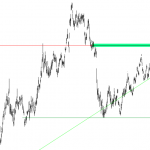Welcome readers, and thanks for subscribing! The Altcoin Roundup newsletter is now authored by Cointelegraph’s resident newsletter writer Big Smokey. In the next few weeks, this newsletter will be renamed Crypto Market Musings, a weekly newsletter that provides ahead-of-the-curve analysis and tracks emerging trends in the crypto market.
The publication date of the newsletter will remain the same, and the content will still place a heavy emphasis on the technical and fundamental analysis of cryptocurrencies from a more macro perspective in order to identify key shifts in investor sentiment and market structure. We hope you enjoy it!
DeFi has a problem, pump and dumps
When the bull market was in full swing, investing in decentralized finance (DeFi) tokens was like shooting fish in a barrel, but now that inflows to the sector pale in comparison to the market’s heyday, it’s much harder to identify good trades in the space.
During the DeFi summer, protocols were able to lure liquidity providers by offering three- to four-digit yields and mechanisms like liquid staking, lending via asset collateralization and token rewards for staking. The big issue was many of these reward offerings were unsustainable, and high emissions from some protocols led liquidity providers to auto-dump their rewards, creating constant sell pressure on a token’s price.
Total value locked (TVL) wars were another challenge faced by DeFi protocols, which had to constantly vie for investor capital in order to maintain the number of “users” willing to lock their funds within the protocol. This created a scenario where mercenary capital from whales and other cash-flush investors essentially airdropped funds to platforms offering the highest APY rewards for a short period of time, before eventually dumping rewards in the open market and shifting the investment funds to the greener pastures.
For platforms that secured series funding from venture capitalists, the same sort of activity took place. VCs pledge funds in exchange for tokens, and these entities reside in the ranks of the largest tokenholders in the most lucrative liquidity pools. The looming threat of token unlocks from early investors, high reward emissions and the steady auto-dumping of said rewards led to constant sell pressure and obviously stood in the way of any investor deciding to make a long investment based on fundamental analysis.
Combined, each of these scenarios created a vicious cycle where protocol TVL and the platform’s native token would basically launch, pump, dump and then slip into obscurity.
Rinse, wash, repeat.
So, how does one actually look beyond the candlestick chart to see if a DeFi platform is worth “investing” in?
Let’s take a look.
Is there revenue?
Here are two charts.



Unless there’s something wrong with the data or some metrics related to Algorand and its ecosystem are not captured by Token Terminal, this is shocking. Looking at the chart legend, one will also note that there are no token incentives or supply-side fees distributed to liquidity providers and token stakers.
Related: 3 emerging crypto trends to keep an eye on while Bitcoin price consolidates
GMX, on the other hand, tells a different story. While maintaining a circulating market cap of $272 million and an annualized revenue of $28.92 million, GMX’s cumulative supply-side fees have steadily increased to the tune of $33.9 million since April 24, 2022. Supply-side fees represent the percentage of fees that go to service providers, including liquidity providers.

Before investing in a DeFi project, it’s wise to take a look at the token’s total supply, circulating supply, inflation rate and issuance rate. These metrics measure how many tokens are currently circulating in the market and the projected increase (issuance) of tokens in circulation. When it comes to DeFi tokens and altcoins, dilution is something that investors should be worried about, hence the allure of Bitcoin’s (BTC) supply cap and low inflation.

Before taking up a position in ALGO, investors should look for more growth and daily active users of Algorand’s DApp ecosystem, and there obviously needs to be an uptick in fees and revenue.

Whether revenues are high or low, two other important metrics to check are active addresses and daily active users if the data is available. Algorand has a multi-billion-dollar market cap and a 10-billion ALGO max supply, but low annual revenue and few token incentives present the question of whether the ecosystem’s growth is anemic.
Viewing the chart below, we can see that ALGO active addresses are rising, but generally, the growth is flat, and active address spikes appear to follow price surges and sell-offs. As of Oct. 14, there were 72,624 active addresses on Algorand.




Investors might be better served by just sitting on their hands and tracking the data to see when new trends emerge, then looking deeper into the fundamentals that might back the sustainability of the new trend.
This newsletter was written by Big Smokey, the author of The Humble Pontificator Substack and resident newsletter author at Cointelegraph. Each Friday, Big Smokey will write market insights, trending how-tos, analyses and early-bird research on potential emerging trends within the crypto market.
The views and opinions expressed here are solely those of the author and do not necessarily reflect the views of Cointelegraph.com. Every investment and trading move involves risk, you should conduct your own research when making a decision.








Leave A Comment